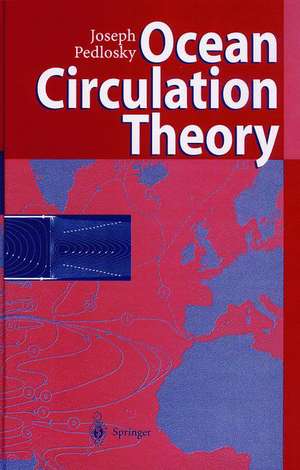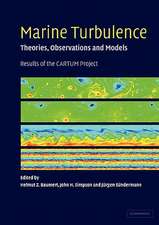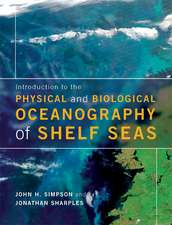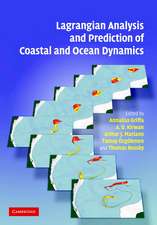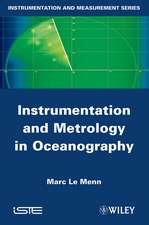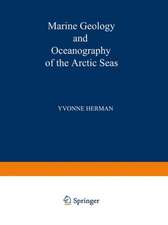Ocean Circulation Theory
Autor Joseph Pedloskyen Limba Engleză Hardback – 10 sep 1998
| Toate formatele și edițiile | Preț | Express |
|---|---|---|
| Paperback (1) | 1045.84 lei 38-44 zile | |
| Springer Berlin, Heidelberg – 6 dec 2010 | 1045.84 lei 38-44 zile | |
| Hardback (1) | 1834.55 lei 43-57 zile | |
| Springer Berlin, Heidelberg – 10 sep 1998 | 1834.55 lei 43-57 zile |
Preț: 1834.55 lei
Preț vechi: 2237.26 lei
-18% Nou
Puncte Express: 2752
Preț estimativ în valută:
351.05€ • 367.44$ • 292.18£
351.05€ • 367.44$ • 292.18£
Carte tipărită la comandă
Livrare economică 31 martie-14 aprilie
Preluare comenzi: 021 569.72.76
Specificații
ISBN-13: 9783540604891
ISBN-10: 3540604898
Pagini: 472
Ilustrații: XI, 456 p.
Dimensiuni: 156 x 234 x 34 mm
Greutate: 0.96 kg
Ediția:1st ed. 1996. Corr. 2nd printing
Editura: Springer Berlin, Heidelberg
Colecția Springer
Locul publicării:Berlin, Heidelberg, Germany
ISBN-10: 3540604898
Pagini: 472
Ilustrații: XI, 456 p.
Dimensiuni: 156 x 234 x 34 mm
Greutate: 0.96 kg
Ediția:1st ed. 1996. Corr. 2nd printing
Editura: Springer Berlin, Heidelberg
Colecția Springer
Locul publicării:Berlin, Heidelberg, Germany
Public țintă
Professional/practitionerDescriere
The waters of the earth are gathered in shallow, irregular, interconnecting basins. Heated by the sun and driven by the wind, the oceans circulate endlessly. The general circulation of the ocean is the persistent pattern of this flow on the scale of the basins. It is the heart and soul of physical oceanography, and the explanation and prediction of the flow from the principles of fluid dynamics is the chief goal of the physical oceanographer. Along with the pattern of the motion, the associated fields of pressure, temperature, salinity, and density are also necessary components of a complete theory for the ocean circulation since they are dynamically linked to the motion of the oceans. The physical problem posed by the general circulation of the oceans is a difficult one both experimentally and theoretically. From the point of view of theoretical fluid mechanics the difficulty springs fundamentally from the recirculating character of the circulation. The fluid is gathered into a single, though highly contorted basin.
Cuprins
1 Sverdrup Theory.- 2 Homogeneous Models of the Ocean Circulation.- 3 Vertical Structure: Baroclinic Quasi-Geostrophic Models.- 4 Theory of the Ventilated Thermocline.- 5 Buoyancy Forced Circulation and Cross-Gyre Flow.- 6 Equatorial Dynamics of the Thermocline: The Equatorial Undercurrent.- 7 Abyssal Circulation.
Caracteristici
Careful synthesis of modern theories hitherto scattered in the literature - A vast amount of material collected and interpreted pedagogically
